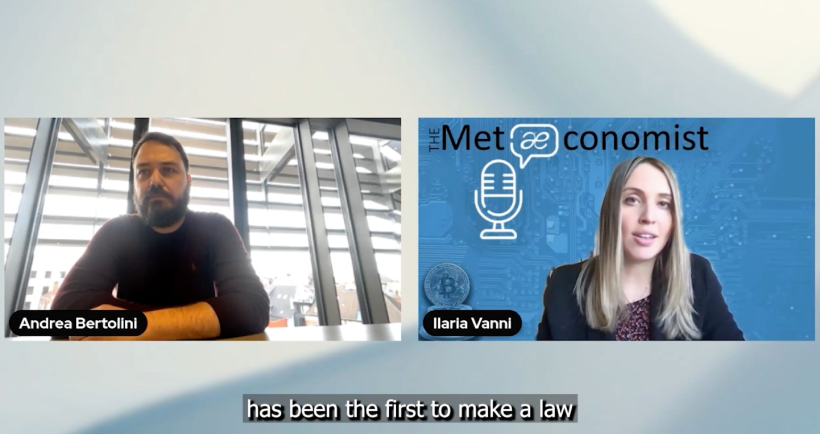
BLOCKCHAIN PROOF OF STAKE - DTL technologies - Distributed Ledger Technology - such as blockchain, bring with them, from the moment of their networking, environmental impact critiques. Ethereum blockchain has announced that it is ready to leave the old validation method with a new one. The Merge, is the name of the new one, will stop any criticism of environmental sustainability.
The Bitcoin/Ethereum Energy Consumption Index of the University of Cambridge, a center responsible for examining the environmental impact of the blockchain, has shown that to make a single Bitcoin transaction takes about 2,100 kilowatt hours (kWh). Not only did it estimate that in 2021 alone bitcoins produced over 56.8 million tons of CO2. These numbers are impressive when you think that the energy needed to power a bitcoin transaction is equivalent to what an average US family consumes in 75 days. At the beginning of 2022, however, Bitcoin consumed 138 terawatt hours per year, more than the whole of Norway.
The data collected by the Bitcoin/Ethereum Energy Consumption Index of the University of Cambridge concerns only bitcoins, but we must keep in mind that the types of cryptocurrencies that exist are many. Each with its own energy consumption and CO2 production.
There are many challenges to blockchain technology and all that comes with it. In particular, it is the mining process that is being prosecuted. This is the process of sharing the computing power of the hardware participating in the network. That is, the operations needed to generate new cryptocurrencies, verify their authenticity and certify the various transactions. Mining objectively requires a high rate of energy:
The high energy consumption required by the mining process is justified by the system, which for example is used for the realization of Bitcoin, Proof-of-Work (PoW). It is a particular algorithm aimed at discouraging hacker attacks and abuse on the network. A key feature of these schemes is their asymmetry: the work must be moderately complex (but feasible) from the requesting side but easy to control for the service provider (service provider).
PoW has high costs, both economic, energy consumption and emissions. This is because many operations can be solved only by computers with higher computational performance, which still take a long time to work. In fact, the network can handle up to about seven transactions per second, but it takes about 10 minutes to confirm each incoming transition. In these 10 minutes a new block is formed.
Existing blockchain companies are trying to find a more economical and environmentally friendly solution. You seem to have succeeded, Ethereum. The second most widespread blockchain in the world is preparing to put the PoW aside to adopt, from 19 September 2022 the PoS, Proof-of-Stake.
Proof of Stake based cryptocurrencies can be thousands of times more efficient than PoW based cryptocurrencies. It is a consent algorithm, the purpose of which is to allow the creation of a new block and then new cryptocurrencies favoring those who have more. According to the PoS to have more coins it makes the owner responsible and it makes him more interested in ensuring the veracity of the creation process. Because a disorganized network would endanger the security of your investments.
The differences between the two systems are considerable and understandable already analyzing the respective names. Proof-of-Work bases its mechanism on the test of the functioning, that is, in the calculation of the computational effort necessary to solve the mathematical problem behind each single block. In the PoS (participation test) we consider instead the evidence that each user can provide to demonstrate their interest in ensuring the security of the transition. The PoW therefore provides for the use of a large number of computers of gigantic size to validate an operation, capable of consuming a lot of energy, while the pos needs only a deposit, taken directly from your own.
The operation of the PoW requires each of its nodes to perform an arduous calculation work to solve cryptographic puzzles. In PoS, on the contrary, this is not necessary. For each transaction a node - called validator - is chosen on which to validate the entire block. The choice is made entirely randomly, but rewards users who have the most cryptocurrencies. Criteria used for the choice, however, can also be other, such as the speed of claim, the greater period of time in which you are present in the network, for example.
Both algorithms come with advantages and disadvantages. The launch of the PoS by Ethereum is no exception. This is an important response to criticism of the environmental sustainability of the blockchain, but could generate strong discontent among mining supporters.
Only in July 2022, according to data collected by the company The Block, the mining of Bitcoin produced 555 million dollars. This phenomenon is in contrast to the negative historical moment that cryptocurrencies in general are experiencing. Only the future will tell us how users and the market will take the replacement of Bellatrix (the PoW algorithm of Ethereum), with The Merge (the PoS algorithm of Ethereum).

Viola Meacci, student of Biomedical Engineering at the University of Pisa, has always been interested in the world of journalism. In her job, she explored the world of blockchain, cryptocurrencies, NFT and metaverse which she now very is passionate about it .





